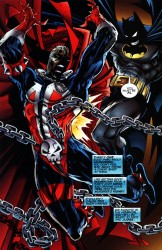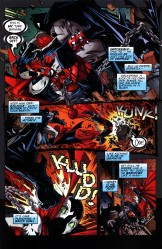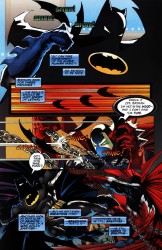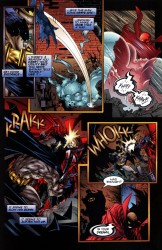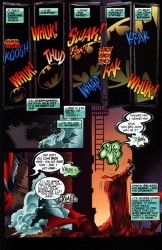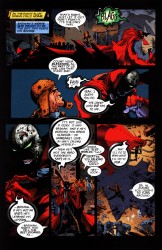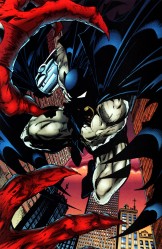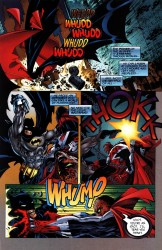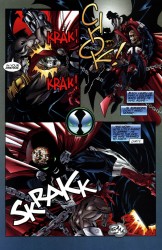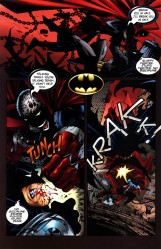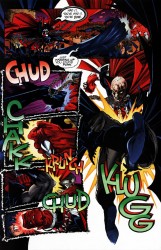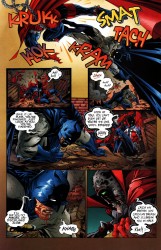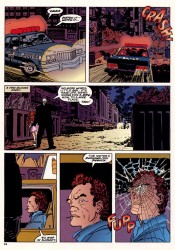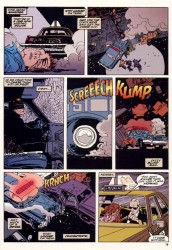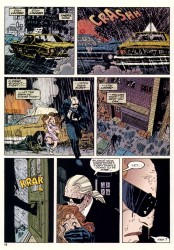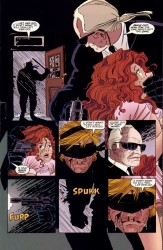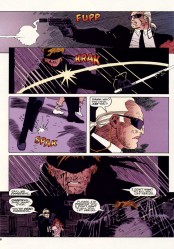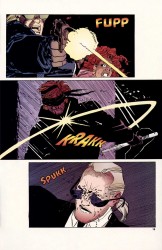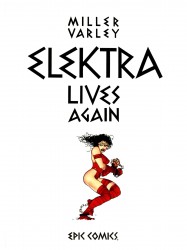
Booze, Broads, & Bullets: Sin City: The Big Fat Kill
April 15th, 2010 Posted by david brothersYou should probably go and read Chad Nevett on That Yellow Bastard and then make your way back here. Peep the index. This one is about the book and about me and my relationship to the book, so, y’know, pull up a chair.
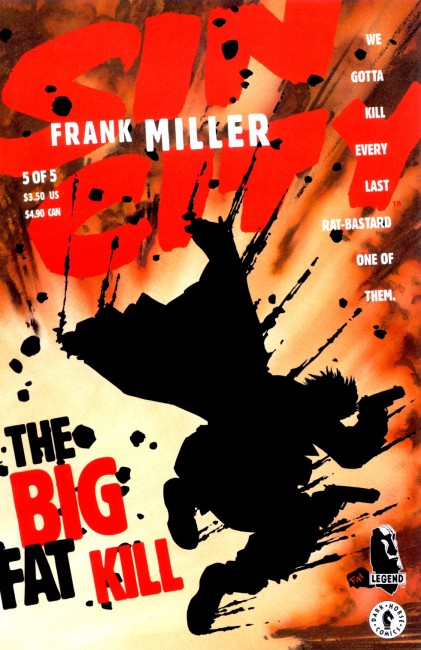
My first comics were Amazing Spider-Man 316, 317, 321 and 322. The first two were the return of Venom, while the latter two were part of the Assassin Nation Plot, with art by Todd McFarlane and words by David Michelinie. I read them til they fell apart, and up until getting screwed over in a move a few years back, they were the oldest comics I owned. I think the first I bought with my own money, or traded for or whatever, was X-Men 1. That set the tone for my comics habits for the next few years. I was reading Marvel, mostly out of the X-office, almost exclusively. I picked up the odd books via trading– Warriors of Plasm, Spawn, Shadowhawk, Robin–but my world was fairly limited. Until Sin City: The Big Fat Kill.
I only ever had chapter five of The Big Fat Kill when I was younger, but I read it dozens, if not hundreds, of times. It’d be years, and I’d be grown, before I read the full story. I’d read plenty of comic books before it, but none like it. The cover alone was different. There was an explosion, a guy jumping, and then some striking text: “Sin City.” More text: “We gotta kill every rat-bastard one of them.” Still more, off to the lower left: “The Big Fat Kill.” This book was different. This was designed. It wasn’t just disparate cover elements tossed onto a gaudy, garish pinup.
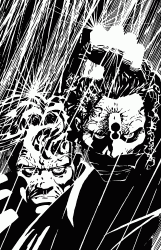
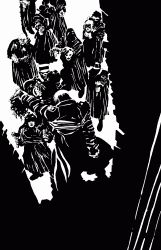
Inside was a revelation. Comics come in black and white? And I mean literal black and white. There were no shades of grey, like in flashbacks. People cursed, people died, guns went off, and it was all rendered in two colors. Architecture flip-flopped colors and appeared only in contour. People didn’t have figures so much as vague outlines, and their shadows were all weird. Some pages were half empty, there were panel dedicated to sound effects, and the lettering was uneven and weird. I didn’t know back then, but I now recognize that Miller was playing with negative space, pacing, and contrast. It was just striking. It was amazing.
And the ending– it was murder. “We gotta kill them because we need them dead.” No nobility, no heroism, no moral, and no cause. These people gotta die because Dwight and the girls need to prove a point. Quite a difference from Wolverine pulling his claws or Bishop shooting people with energy bullets.
Past the ending was a letters page. “Keynote Speech by Frank Miller To Diamond Comic Distributors Retailers Seminar.” It was a speech about something entirely new to me. I didn’t know about Jack Kirby, or William Gaines, or the Comics Code Authority. Royalties? What? Creator-ownership? Making fun of Marvel? Past the letters page were pinups. Sergio Aragones, who I knew from Mad. Walt Simonson, who I didn’t know at all.
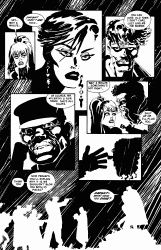
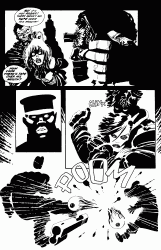
I would’ve been twelve, but more likely eleven, when I first read it. I don’t think I even really got that the girls were hookers when I first read this. I knew they had actual nudity, rather than the fake nudity of superheroines. It just never clicked. I was out of my depth. The Big Fat Kill was bigger than anything I’d read before, from front to back. It left my brains on the wall.
I didn’t see it at the time, but The Big Fat Kill came along at the right time. I already liked mystery/adventure books. I dug Nancy Drew, Encyclopedia Brown, and Sherlock Holmes more than the Hardy Boys, and I blazed through Frank Peretti’s Cooper Kids books. But, reading and re-reading and absorbing The Big Fat Kill was like the end of The Usual Suspects. Tumblers clicked into place, and I was introduced to what would later become my favorite thing. This hard-boiled, ugly, jarring, nasty bastard of a book was a virus. It rewrote my brain.
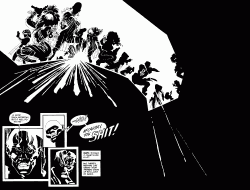
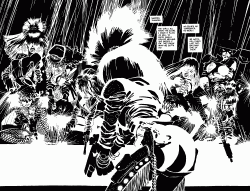
It was that last scene that did it for me. The calculated murder, the callous way they went about it, and the pithy line Dwight drops when the killing starts (“Where to fight. It counts for a lot. But there’s nothing like having your friends show up with lots of guns.”), all of that had a huge effect on me. Now, I love crime fiction more than anything else, couldn’t really care less about sci-fi/fantasy if I tried, and old movies where women grip cigarette holders, breathe out clouds of stylish death, and send men off to die with a glance and a false smile are some of my favorites. The only thing that even comes close to my attraction to crime stories are stories about feudal Japan, and guess what Frank Miller flirted with in Ronin?
The Big Fat Kill is one of those books I can’t accurately judge. I’m too close to it, it’s too entwined in my DNA. If I had to pretend to be objective, I’d say that Chad has it down pretty well. It’s a short story, not trying to do a whole lot beyond show some manly men, violent women, and dangly earrings. There’s nothing righteous or noble about it. It warps a young mind.
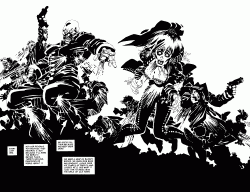
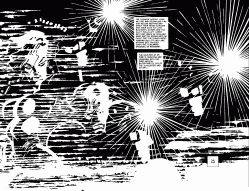
“We gotta kill every last rat-bastard one of them.”

